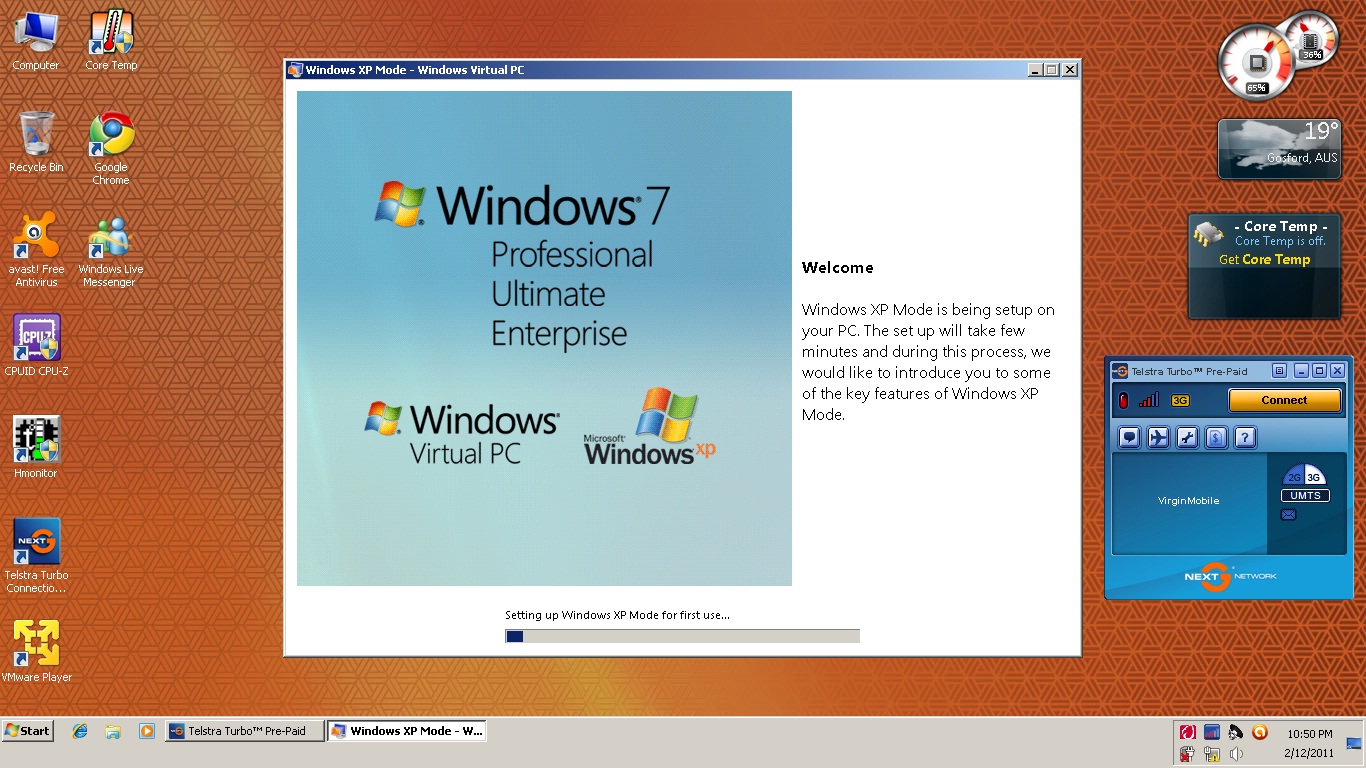

- #Windows virtual pc and windows xp mode download for windows
- #Windows virtual pc and windows xp mode install
Which sounds pretty cool but I don’t really find much use besides being able to run your PC environment on another PC via Windows Virtual PC. SysInternals recently released a tool that allows you to create VHDs of your physical drives. However, it should work fine on Home Premium as well if the setup is run (I haven’t tried it.)
#Windows virtual pc and windows xp mode download for windows
Officially Microsoft has made XPM as a free download for Windows 7 Professional & Ultimate/Enterprise users.
#Windows virtual pc and windows xp mode install
XP Mode is a simple install that will create a virtual machine of Windows XP with Integration Components installed. Windows XP Mode has been introduced with Windows 7 to enable better legacy compatibility support for corporate users and XP Mode Applications is its biggest advantage. Part 4: Windows XP Mode & XP Mode Applications Use Windows Virtual PC Jumplist and click on Manage virtual machines alternately you navigate to C:\Users\\Virtual Machines Here, simply select the VPC instance you want to configure and press Settings in the taskbar below the address bar. This is possible due to Virtual PC’s shell integration with Windows 7. Once you’ve installed and all’s fine, you can configure your machines without having to start Virtual PC. If you’re installing a Windows machine, after installation you should install the Integration Components for seamless integration, the biggest advantage is the cursor movement between the VPC & desktop. Start –> Run –> c:\Windows\System32\VPCWizard.exe Once you’ve downloaded Windows Virtual PC, you can install your own copy of Windows XP (and not necessarily use XPM), Vista, Server or a Linux distro as shown in the earlier article. Windows Virtual PC works fine on Home Premium and above editions of Windows 7. NOTE: This works only for Windows based virtual machines. You should now have the virtual machine in the right click context menu as well. You will see the virtual machine listed in this window.Now, on the host machine, run the VMLauncher.exe file (not the one in the Client folder.).Run the VMLauncher.exe in the folder named Client and install it.Start your virtual machine and navigate to the Client folder.Extract the contents to any folder, among other things there will be a file named VMLauncher.exe & a folder named Client.two is an installer for the virtual machine.one is a standalone launcher for the host machine.The utility creates an entry in the Right Click menu for the applications that will allow you launch the application directly into the virtual machines setup on the host. If you wish to launch an application from your host machine directly into your virtual machine you can use a utility created by MVP Woflgang Unger. NOTE: Windows Virtual PC is required for XPM. And though unsupported by Microsoft, Windows Virtual PC works well on Windows Home Premium. One can install Linux distros on it as well. Windows Virtual PC now has support for USB drives as well, which might I say is a #WIN! Not much has changed, it still works pretty much the same way but has tighter integration with Windows 7. Once all’s set, we’ll go on and download Windows Virtual PC (it still in RC for the public but has RTMed and the final bits are available for MSDN & TechNet subscribers.) Windows Virtual PC replaces Virtual PC 2007. There’s a tool by Microsoft as well that tells you whether Hardware Virtualization is supported on your PC: We’ll make use SecurAble to determine Hardware Virtualization. This is required for Windows XP Mode and better support for a virtual environment. Part 1: Enabling Hardware Virtualizationīefore we begin, make use of this tool to check whether your processor supports hardware virtualization and if need be, enable it via BIOS. However, having Hardware Virtualization will definitely improve performance. Update: Microsoft has dropped the need to enable Hardware Virtualization, you can skip Part 1. In this article I’ll talk about Windows Virtual PC, creating VHDs, native boot into VHDs & optical drive emulation. Using machines in a virtual environment is really fun, being able to try out OSs without having to restart to change the OS is time saving, though there’s a compromise on performance. XP Mode (XPM) – a virtual XP machine to tackle legacy app issues


 0 kommentar(er)
0 kommentar(er)
